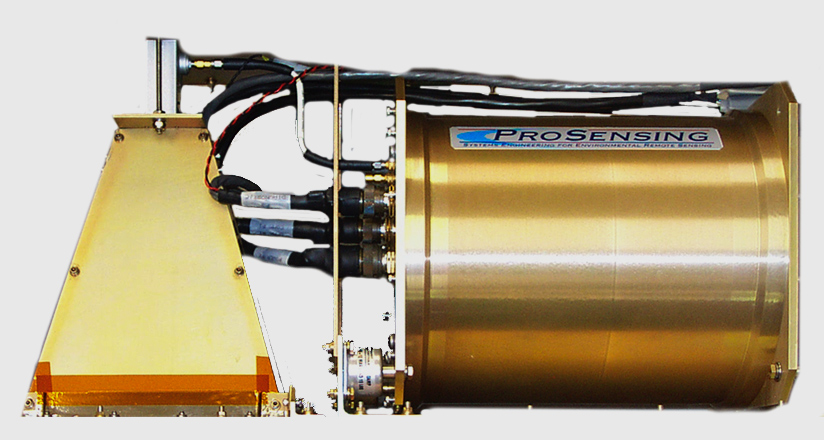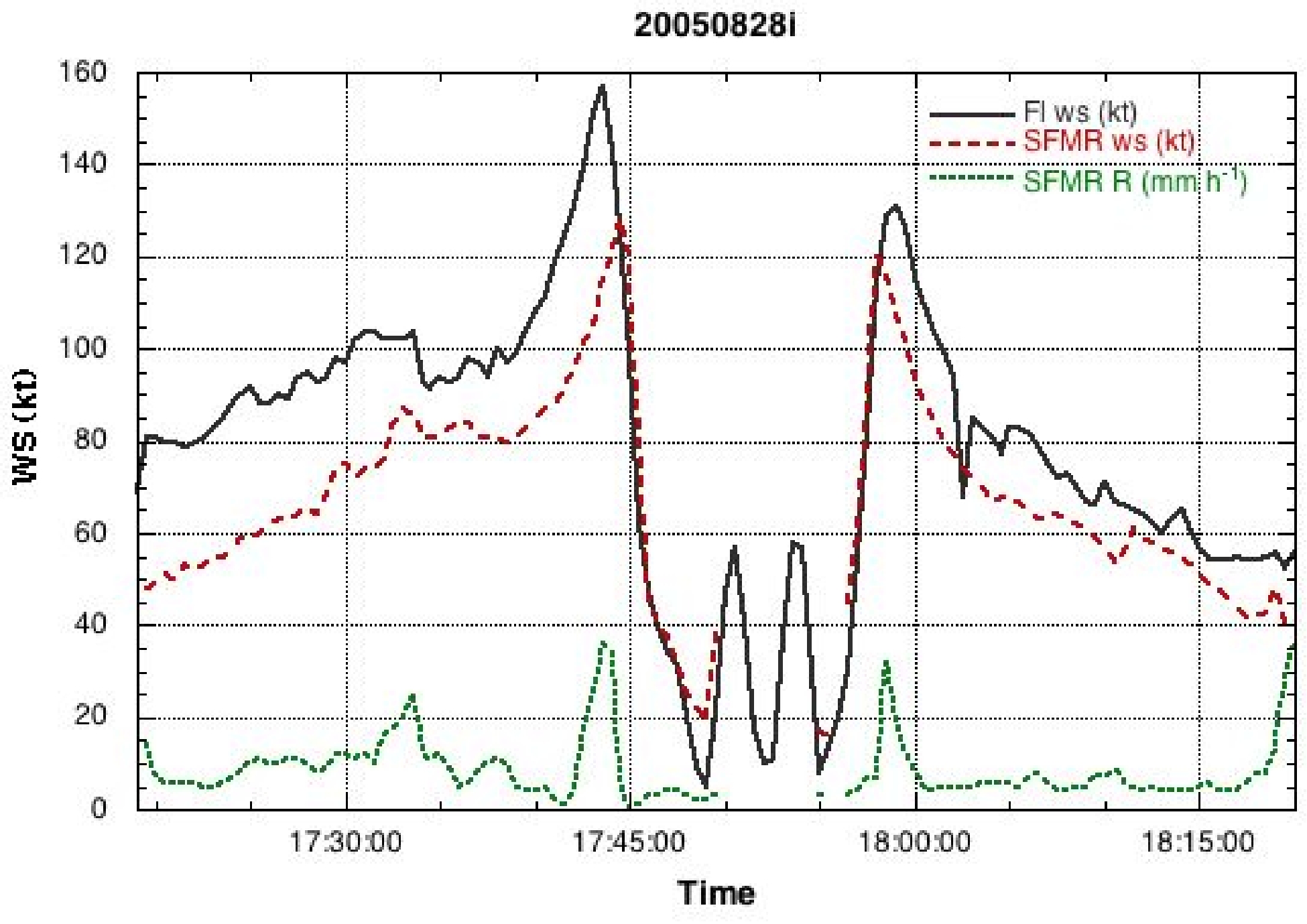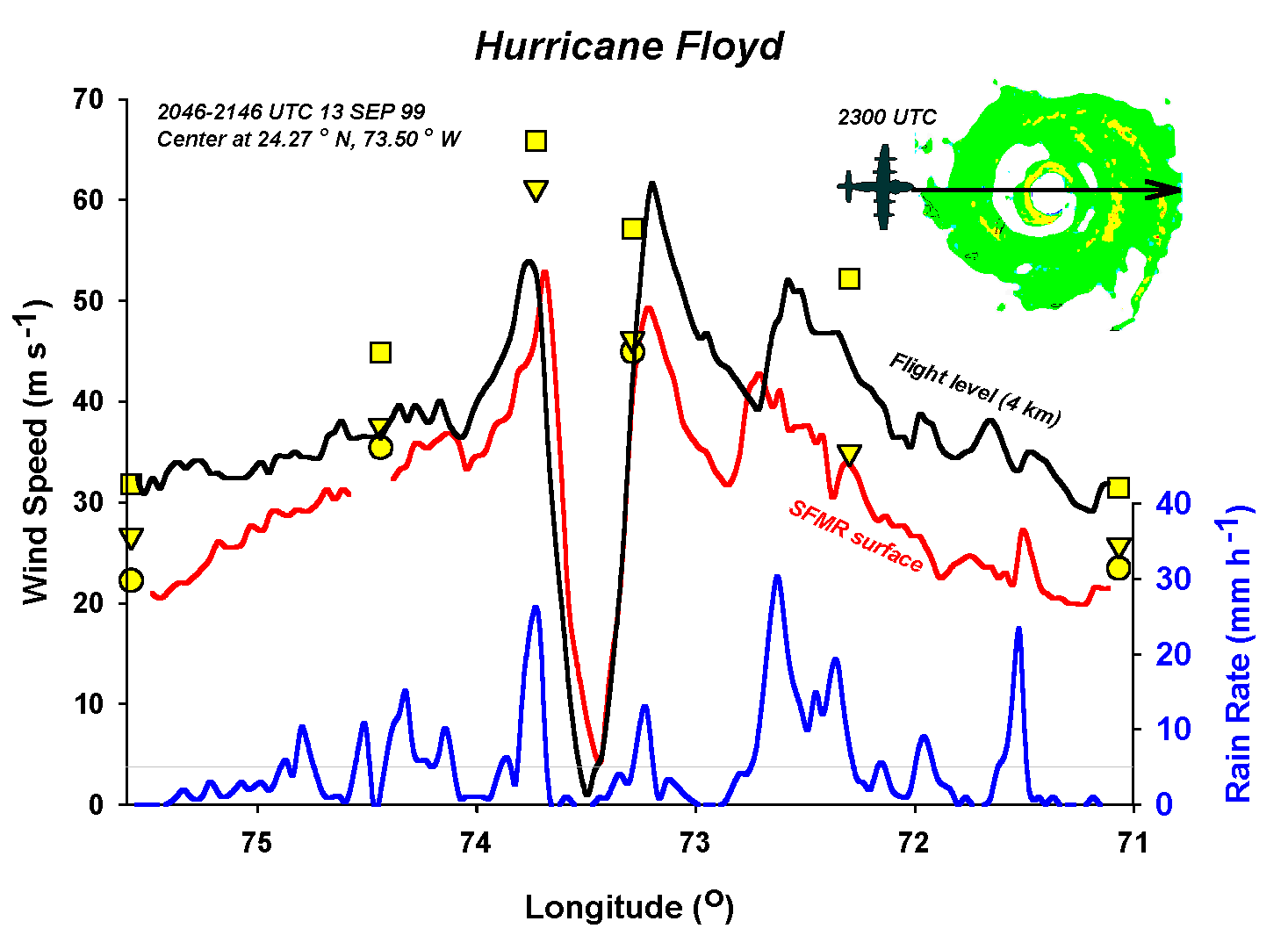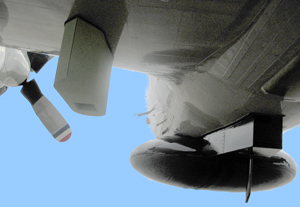|
Stepped Frequency Microwave Radiometer (SFMR) developmentCollaborating scientist(s): Peter Black Alan Goldstein (AOC) Ivan Popstefanija (ProSensing Inc.) Jim Carswell (Remote Sensing Solutions Inc.) Jimmy Franklin (NHC)
Reports and presentations:
Overview IHC 2006 Power Point presentation on the SFMR IHC 2006 Power Point presentation on the SFMR during Katrina and Rita NHC's IHC 2006 Power Point presentation on the SFMR Jim Carswell's IHC 2006 Power Point presentation on the SFMR
 Objective:
Objective:Measurement of the hurricane surface wind field, and in particular the estimation of wind maxima, has long been a requirement of the Tropical Prediction Center/OAR (TPC/NHC). The NOAA/Hurricane Research Division's (HRD) Stepped-Frequency Microwave Radiometer (SFMR) ,built by Prosensing Inc., is the prototype for a new generation of airborne remote sensing instruments designed for operational surface wind estimation in hurricanes. The first experimental SFMR surface wind measurements were made in Hurricane Allen in 1980, the first real-time retrieval of winds on board the aircraft in Hurricane Earl in 1985, and the first operational transmission of winds to TPC/NHC in Hurricane Dennis in 1999.
Background: Since hurricane reconnaissance began in 1947, numerous methods have been employed to estimate the distribution of surface winds in hurricanes. Sea-state catalogs have provided a subjective guide for the determination of the wind speed. For many years surface winds have been estimated by flight-level measurements using various extrapolation algorithms. Maximum sustained winds have also been estimated using pressure-wind relationships. Studies prior to 1980 have shown that passive microwave emissions from the sea surface are also strongly correlated with wind speed. The concept for the first experimental SFMR was proposed by C. T. Swift at the University of Massachusetts Microwave Remote Sensing Laboratory (UMASS/MIRSL) and built by NASA's Langley Research Center in 1978. The SFMR design involved a single nadir-viewing antenna and receiver capable of making measurements of radio emission from the sea surface at four selectable frequencies between 4.5 and 7.2 GHz. The "stepping" procedure allowed for estimating the surface wind speed in hurricanes by correcting for rain-induced effects in the measurements, and therefore enabling recovery of the rainrate. The first measurements by the original SFMR were made from the NOAA WC-130 aircraft in Hurricane Allen in 1980. By making assumptions about the vertical structure of the atmosphere together with sea surface temperature (SST) measurements by a downward-looking airborne infrared radiometer, reasonable estimates of the ocean surface brightness temperature (Tb) were made at 4.5, 5.0, 5.6, and 6.6 GHz. Wind speeds were then calculated assuming a linear increase in wind speed with Tb, independent of frequency. Agreement between surface (20 m) winds extrapolated from the 1500 m flight-level and the SFMR estimates for independent flight legs were within +/-10 %. Despite the success in Allen, this instrument was never again flown into a hurricane.
With support from the Office of the Federal Coordinator for
Meteorology (OFCM) the existing horn antenna was replaced with a
dipole array antenna in 1993. The new antenna with a new set of six
frequencies was flown in Hurricane Olivia (1994) and retrieved
 Accomplishments:
Key references:
Last modified: 2/23/2005 |
Links of Interest
AOML Tools & Resources
Employee Tools
|

 high-quality wind estimates. Further funds were provided by OFCM for
an upgrade of the SFMR's receiver, which allowed for increased
calibration stability. The reconfigured SFMR was
first flown in Hurricane Jerry in 1995. Minor modifications were made
to reduce background noise levels after the 1995 season, and since
then the SFMR has flown under this configuration. Following component
failures in 2000, the NOAA Office of Oceanic and Atmospheric Research
(OAR) supported an instrument repair and again the SFMR returned
surface winds during the 2001 hurricane season. Since 1980, the SFMR
has flown on over 150 flights in 50 tropical cyclones.
high-quality wind estimates. Further funds were provided by OFCM for
an upgrade of the SFMR's receiver, which allowed for increased
calibration stability. The reconfigured SFMR was
first flown in Hurricane Jerry in 1995. Minor modifications were made
to reduce background noise levels after the 1995 season, and since
then the SFMR has flown under this configuration. Following component
failures in 2000, the NOAA Office of Oceanic and Atmospheric Research
(OAR) supported an instrument repair and again the SFMR returned
surface winds during the 2001 hurricane season. Since 1980, the SFMR
has flown on over 150 flights in 50 tropical cyclones.
